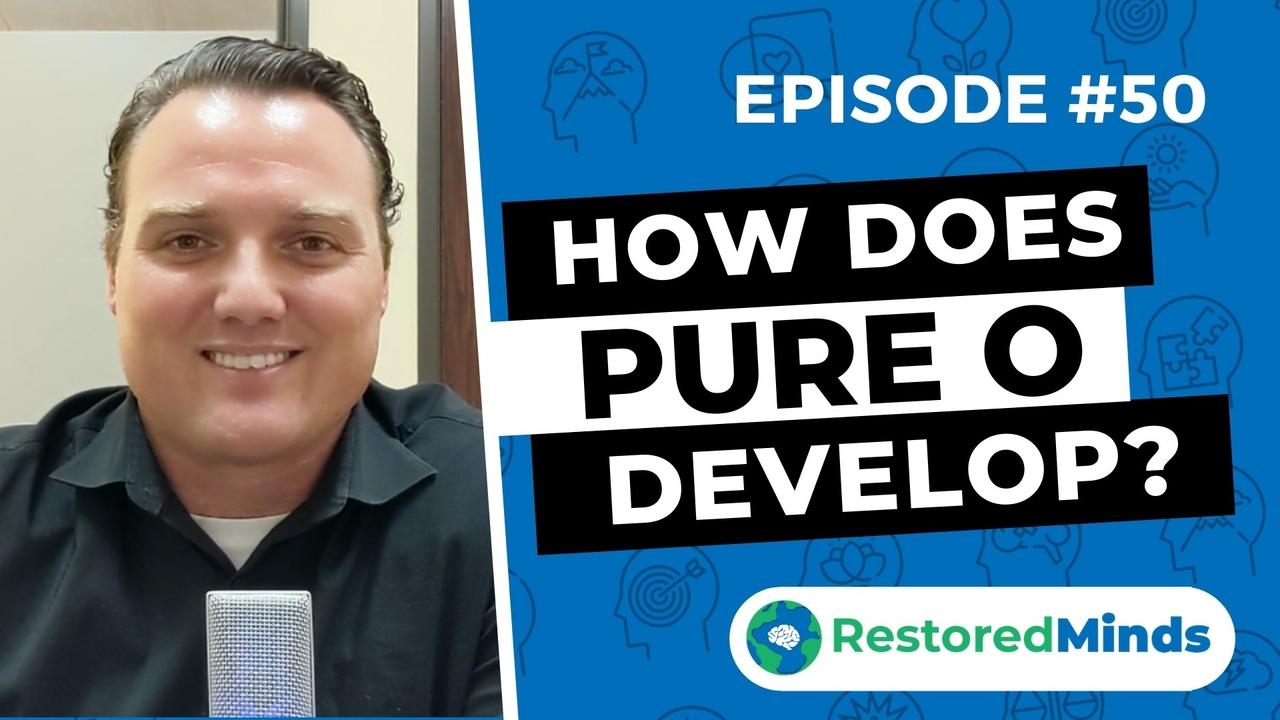How Does “Pure O” Develop?
Sep 30, 2020
What is Pure O OCD?
Pure O OCD stands for purely obsessional OCD. It is considered a subcategory of obsessive-compulsive disorder (OCD). Traditional OCD symptoms often include repetitive behaviors or mental acts that a person feels compelled to perform in response to an obsessive thought. Pure O, however, primarily involves obsessions over three main themes:
-
Harmful or violent thoughts
-
Religious or scrupulosity themes
-
Sexuality and relationship obsessions
In this condition, compulsions may be less visible as they occur mainly as mental rituals.
The Four Components of OCD
Understanding the development of Pure O OCD involves understanding the mechanics of OCD itself. According to Matt, the main speaker from our video at Restored Minds, OCD consists of four crucial components:
-
Obsessive Thought
: This could be an intrusive and distressing thought related to harm, religion, or sexuality.
-
Anxiety or Guilt
: The obsessive thought triggers feelings of anxiety, guilt, or doubt.
-
Compulsive Behavior
: This is the ritualistic action taken to neutralize the anxiety, which, in Pure O, typically involves mental acts rather than physical ones.
-
Relief
: Engaging in the compulsion provides temporary relief from anxiety.
These components form a vicious cycle, with compulsions fueling the fears and exacerbating the obsessions.
Mental Compulsions in Pure O
Traditionally, OCD was seen as a combination of both obsessive thoughts and compulsive behaviors. However, Pure O challenges this model by primarily exhibiting mental compulsions. These mental rituals can include:
-
Thought Suppression
: Trying to push away intrusive thoughts.
-
Thought Replacement
: Replacing a distressing thought with a neutral one.
-
Cognitive Avoidance
: Avoiding situations or triggers that could provoke an obsessive thought.
A person might engage in activities such as silently praying, mentally reviewing conversations, or checking if they are aroused in particular situations. These are all forms of mental compulsions.
The Loop of Pure O OCD
The development of Pure O OCD follows a pattern similar to traditional OCD:
-
An intrusive thought triggers anxiety or discomfort.
-
The person engages in a mental compulsion to alleviate the discomfort.
-
Relief is temporary, and the compulsion reinforces the power of the obsessive thought.
Over time, this cycle can escalate, making the obsessions and mental compulsions dominate a person's life.
Treatment and Awareness
Understanding that mental compulsions are as disabling as physical ones is crucial for effective treatment. Behavioral therapies like Exposure and Response Prevention (ERP) can help break this cycle, even if the compulsions aren't immediately visible.
Conclusion
Pure O OCD is a complex condition that revolves around mental rituals and obsessions. Understanding its mechanics can help in recognizing the importance of addressing both the obsessions and the compulsions, even if they are not outwardly visible.


